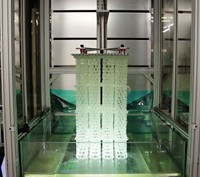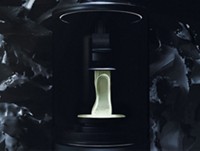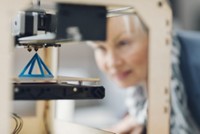Advertisement
Grab your lab coat. Let's get started
Welcome!
Welcome!
Create an account below to get 6 C&EN articles per month, receive newsletters and more - all free.
It seems this is your first time logging in online. Please enter the following information to continue.
As an ACS member you automatically get access to this site. All we need is few more details to create your reading experience.
Not you? Sign in with a different account.
Not you? Sign in with a different account.
ERROR 1
ERROR 1
ERROR 2
ERROR 2
ERROR 2
ERROR 2
ERROR 2
Password and Confirm password must match.
If you have an ACS member number, please enter it here so we can link this account to your membership. (optional)
ERROR 2
ACS values your privacy. By submitting your information, you are gaining access to C&EN and subscribing to our weekly newsletter. We use the information you provide to make your reading experience better, and we will never sell your data to third party members.
Materials
Parts On Demand
Polymer makers are helping additive manufacturing scale up into full parts production
by Alexander H. Tullo
April 25, 2011
| A version of this story appeared in
Volume 89, Issue 17

Imagine a containership crossing the North Atlantic in the midst of a hurricane. The violent storm damages the mount assembly and housing of the ship’s radar antenna.
But instead of limping into port for repairs, the ship’s engineer downloads drawings of the radar components he needs and produces the parts on the three-dimensional printer in his workshop. In a couple of hours, he installs them for a flawless repair.
The scenario is futuristic, but the technology the engineer uses—additive manufacturing—has advanced enough to make it nearly plausible today.
Additive manufacturing is a recent term adopted by an industry eager to leap into the production of finished parts, says Terry Wohlers, president of Fort Collins, Colo.-based market research and consulting firm Wohlers Associates. The term encompasses various processes that share a basic concept: building an object, usually out of a polymer, layer by layer from a mechanical drawing stored on a computer. “Some still call it ‘rapid prototyping’ because prototyping is the biggest application,” Wohlers says. Another term often used is 3-D printing. Practitioners also tend to refer to the names of manufacturing processes such as stereolithography and laser sintering.
The technology is making the leap from the designer’s studio to the factory floor. In addition to traditional prototypes and models, workshops are churning out prosthetic limbs, hearing aids, surgical implements, metal casting patterns, designer furniture, and Boeing 787 Dreamliner parts. And by offering a wider palette of raw materials, polymer suppliers aim to bring additive manufacturing to even more users.
“It grabs the imagination,” says Bill Miller, technical group leader for stereolithography resins at Huntsman Advanced Materials. “It is only natural for people to think that if you can extend it to the manufacturing arena, then you’ve really got something.”
Additive manufacturing, observers say, is a natural choice for small production runs of customized parts. It offers greater freedom of design than other processes. A part can feature a near limitless number of twists, turns, nooks, and crannies. For example, additive manufacturing can produce a plastic model of a house complete with rooms and furniture inside, which would be impossible through traditional injection molding.
And to make a part by injection molding, a fabricator needs to spend thousands of dollars tooling molds and then make thousands of parts to justify the expense. “That makes us very good for medical and dental applications, where every single person is different, or in the case of aerospace where the unit count is very small so the cost of tooling is quite expensive,” says Stephen Hanna, director of rapid manufacturing materials sales and marketing for 3D Systems, a leading additive-manufacturing-technology firm.
Additive manufacturing is catching on. Wohlers says the market has been expanding at an average annual rate of 26% for the past 22 years, reaching $1.1 billion in 2009. About 70% of sales of parts from the machine are models and prototypes. However, direct part production is a growing segment, representing 15% of activity.
Although additive-manufacturing processes are all similar conceptually, they differ in the specifics. Originally developed in the 1980s, stereolithography is the oldest. In this process an ultraviolet laser traces the cross section of a part in a vat of a UV-light-curable resin. After a layer is drawn, the platform on which the part rests is lowered by a fraction of a millimeter, and the laser draws the next layer.
The process can take hours or days, depending on how thick the layers are and how large the part is. When the part emerges from the vat, it goes through finishing steps such as removal of resin residue and additional curing.
Other additive-manufacturing technologies make parts from thermoplastics. In laser sintering, an infrared laser traces the shape in a fine powder of a polymer such as nylon 12. When a layer is completed, the platform drops down, a roller applies another layer of powder, and the laser makes its next sweep across the surface.
Each additive-manufacturing process presents its own challenge to polymer suppliers as the technology scales up to the manufacturing stage. Their main goal is to make resins compatible with the technology and durable enough for real-world applications.
Stereolithography is good for making precise prototypes, but suppliers recognize that additional development is needed to capture more manufacturing applications. The problem is familiar to Huntsman Advanced Polymers and DSM Somos, which helped pioneer the transition from early stereolithography resins based on acrylics to ones based on epoxy blends.
“The drawbacks there were very noticeable,” Huntsman’s Miller says. “The parts and the vats of liquid were very unstable and the accuracies were low.” Huntsman’s and DSM’s predecessors in stereolithography resin, Ciba and DuPont, respectively introduced epoxies to help solve some of these problems, he says.
One area of emphasis today is making the resins behave more like conventional thermoplastics, which are the standard polymer materials used in engineered parts. “These resins are not going to be exactly like ABS [acrylonitrile-butadiene-styrene] or exactly like polyethylene or polypropylene,” Miller admits. “So you are not going to completely mimic them for a final part. But we are coming closer to that.”
Laser sintering is also moving past prototypes and into the manufacturing arena. Nylon 12 has become the dominant polymer used in sintering because of its high crystallinity and its proclivity to form round particles only tens of micrometers in diameter, says Sylvia Monsheimer, business director of global market development for additive manufacturing at Evonik Industries, which makes nylon 12 for laser sintering.
The resin’s high crystallinity allows sintered parts to have sharp edges and contours. Round resin particles can pack densely and uniformly in the thin additive layers. But finding the right morphology—or polymer shape—is one of the challenges in developing materials for laser sintering.
“You can grind the material,” Monsheimer says, “but the result will not be the same because you will achieve only sharp particles,” which will stick out of the layers, leading to rough surfaces on the final part.
When the small particles are sintered together, tiny pockets of air get trapped in the finished part. As a result, a laser-sintered part has mechanical properties that are different from those of a part made via injection molding. According to data from Evonik, the laser-sintered parts aren’t as dense as injection-molded parts. And the elongation at break, which measures how far a material stretches before it gives way, isn’t as high. However, the tensile strength of the laser-sintered part is higher, and the part is somewhat more elastic.
Depending on the application, the advantages of additive manufacturing should more than make up for shortcomings in part properties, argues 3D Systems’ Hanna. “We are a free-form technology,” he says. “But the trade-off will always be that we have limitations in the ultimate durability of the plastic.”
Chemical companies are well on their way toward developing materials that are suitable for manufacturing. “For prototyping, one material is fine and beautiful for most applications,” Monsheimer says. “But if you look into manufacturing applications, then immediately we get higher requirements for the materials.”
Evonik is coming up with grades of nylon that are more flame retardant, are more heat resistant, and are glass filled for greater reinforcement. The company also introduced polyether ether ketone (PEEK) for laser sintering. As it does in other applications, PEEK lends high-temperature and chemical resistance as well as flame retardancy.
Rhodia recently launched nylon 6 plastics with melt viscosity tailored for laser-sintering. And the company’s emulsion process yields particle size and morphology suitable for sintering, says Pierre-Emmanuel Lucas, new business project director for engineering plastics at Rhodia.
Lucas maintains that nylon 12 dominates laser sintering only for historical reasons. When the technology was developing 15 years ago, nylon 12 was available in powder form because of its use in coatings. “The machinery makers tried with what was available at the time,” he says.
But nylon 12’s relative rarity in the world of engineering polymers puts it at a disadvantage to nylon 6, Lucas argues. “It is very necessary, for this technology to move up the ladder from the prototyping world and into the manufacturing world, to offer the people designing parts the polymer they are familiar with,” he says.
Executives don’t expect additive manufacturing to take over the world right away, but they do expect the technology to coexist with other processing techniques. “I don’t think that the lid is going to blow off this and that everything you have in your household is going to be manufactured this way,” Hanna says. “But the number of parts directly manufactured is going to be steadily and progressively increased to the point where it becomes very visible in the near future.”





Join the conversation
Contact the reporter
Submit a Letter to the Editor for publication
Engage with us on Twitter